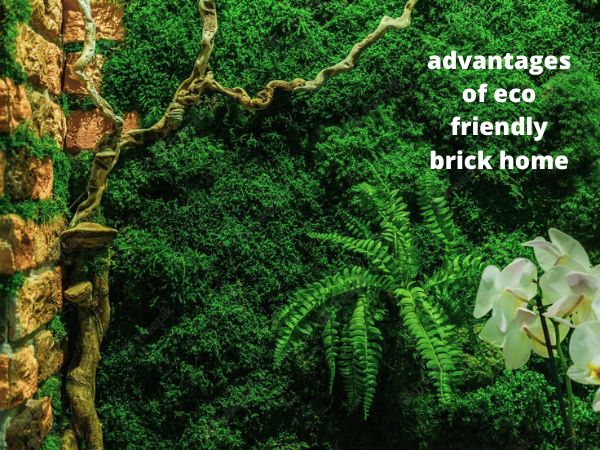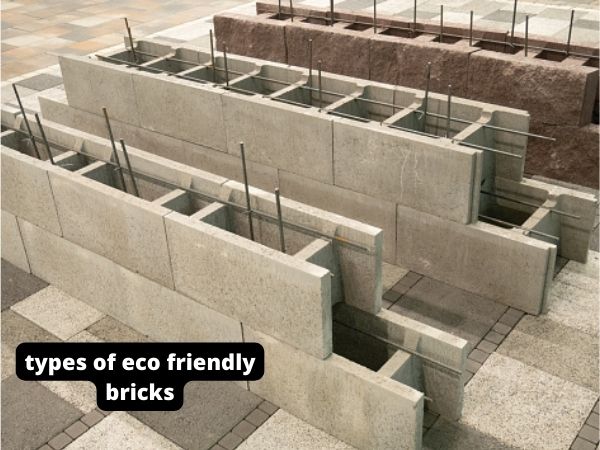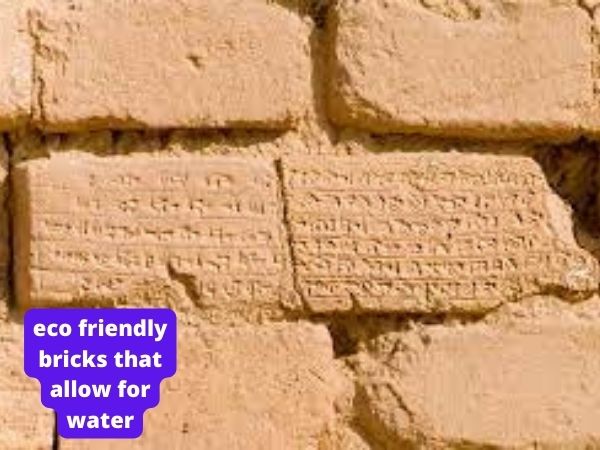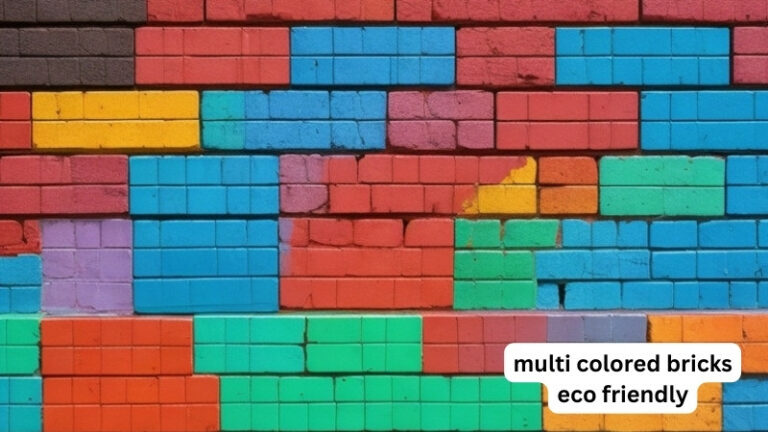eco friendly fly ash bricks | eco friendly living
Today we discuss eco friendly fly ash bricks. Have you ever wondered what happens to the ashes from your cozy and warm fireplace after a long evening of crackling flames and soothing warmth?
Or perhaps you’ve pondered the fate of the ashes from a delightful barbecue grill session, where mouthwatering flavors mingled with the smoky aromas of grilled perfection. Traditionally, these ashes have been carelessly discarded into landfills, lost and forgotten amidst the heaps of waste.
However, fear not, for there is now a brighter and more sustainable way to handle these ashes – eco-friendly fly ash bricks. These remarkable bricks are not only a testament to human ingenuity, but also a solution to the growing environmental concerns that our planet faces.
So, let us embark on a fascinating journey where we shall uncover the secrets behind these innovative bricks and explore how they are lovingly crafted to reduce our carbon footprint and create a greener future.
different sizes of fly ash bricks:
There are typically four different sizes of eco-friendly fly ash bricks: 4-inch, 6-inch, 8-inch, and 12-inch. However, the dimensions of each brick can vary slightly depending on the manufacturer.
For instance, one manufacturer may produce a 6-inch brick that measures 6.25 inches in length, while another may produce a 6-inch brick that measures only 5.75 inches in length.
Therefore, it is crucial to verify with your supplier to ensure that you obtain the correct size of brick for your project.
process of making fly ash bricks:
Eco-friendly fly ash bricks are made by mixing fly ash, lime, and water, pouring the mixture into molds, and allowing it to set.
Fly ash is a by-product of coal-fired power plants, containing silicon dioxide that gives the bricks strength.
Lime is added to make the fly ash more alkaline, controlling the setting time and reducing brittleness.
Water is used to achieve the desired consistency for pouring the mixture into molds.
fly ash bricks vs concrete blocks:
- Fly ash bricks are made of fly ash, lime, and water. Concrete blocks are made of Portland cement, aggregate, and water.
- Fly ash bricks have more compressive strength than concrete blocks.
- Fly ash bricks have less absorption than concrete blocks.
- Fly ash bricks are more uniform in shape and size than concrete blocks.
- Fly ash bricks are easier to cut than concrete blocks.
role of gypsum in fly ash bricks:
Gypsum is a key ingredient in Fly ash bricks, acting as a binding agent that holds the bricks together. It also controls shrinkage and provides strength and durability.
Additionally, gypsum imparts fire-resistant properties to the bricks, making it a common choice in construction.
eco friendly fly ash bricks density:
Eco-friendly fly ash bricks are made from a combination of fly ash, cement, and water. The mixing ratio for fly ash bricks is typically around 80% fly ash, 10% cement, and 10% water. The percentage of fly ash used in the bricks can vary depending on the type of coal burnt to generate electricity at the power plant, but it is usually around 50-70%.
Bricks made solely from fly ash can have a density of around 1600 kg/m3. However, since fly ash bricks contain only 80% fly ash, their average density is 1280 kg/m3. In comparison, the average density of red bricks is 1800 kg/m3. Therefore, fly ash bricks are lighter than clay bricks.
fly ash brick advantages and disadvantages:
When used in bricks, fly ash saves energy and resources required for firing clay, reduces greenhouse gas emissions, and uses waste materials that would otherwise be considered pollutants.
While fly ash bricks offer many advantages, there are also some disadvantages to consider. Due to their lower density, fly ash bricks are not as strong as clay bricks and may not be suitable for load-bearing applications.
In addition, the manufacturing process for fly ash bricks is currently more expensive than traditional brick production. However, as fly ash bricks become more widely used, the cost will likely decrease.
Fly ash bricks are an excellent alternative to traditional clay bricks. They offer many advantages, including energy savings, greenhouse gas reduction, and the use of waste materials that would otherwise be considered pollutants.
While there are some disadvantages to consider, such as strength and cost, fly ash bricks are a great option for many applications.
bottom ash vs fly ash:
Bottom ash is the heavier and coarser portion of coal that settles at the bottom of the furnace during combustion. In a coal-fired power plant, it can be visually identified as a layer of grey sludge at the bottom.
In contrast, fly ash is significantly finer and lighter than bottom ash. It consists of very small particles that are carried by the flue gases and remain suspended in the air. Fly ash usually constitutes around 15 to 20 percent of power plant emissions.
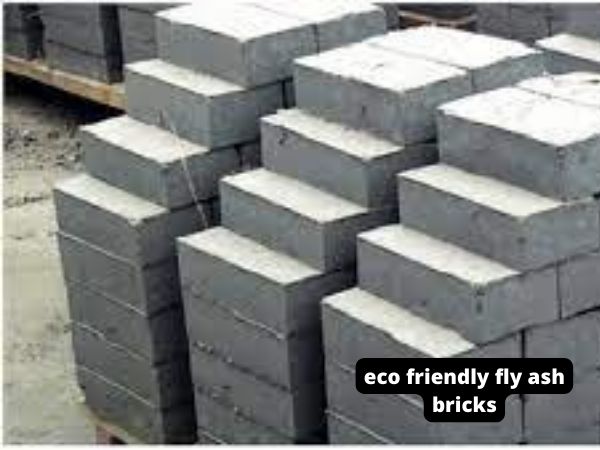
Faqs for eco friendly fly ash bricks:
Answer:
No, bottom ash is not perfect for making bricks. While it can be used for this purpose, there are better materials available. Bottom ash is a byproduct of coal-fired power plants and contains high levels of metals and other toxins that can be harmful to both people and the environment.
Answer:
Yes, wet ash is perfect for making bricks. because of the wet ash strengthens the bond between the bricks, which makes them less likely to crumble or crack over time.
plus, wet ash prevents moisture from seeping into the brick, which can cause it to degrade. Finally, wet ashes with a high concentration of minerals give brick made with it a more textured and interesting look.
Answer:
The two types of bricks have different strengths because they are made from different materials. Clay ash bricks are made from clay and ash, while fly ash bricks are made from fly ash and lime.
Fly ash is a by-product of the burning of coal, so it is more common than clay ash. Fly ash bricks are stronger than clay ash bricks because they contain more cement.
Answer:
The size of a fly ash brick depends on the manufacturing process. However, in general, fly ash bricks’ dimensions are around 150 mm x 100 mm x 65 mm.
Answer:
According to a study by the Central Building Research Institute (CBRI), the ideal ratio of fly ash to other materials in eco friendly fly ash bricks is 70:30. However, the actual ratio can vary depending on the type of clay and other additives used.
The most important thing is to ensure that the bricks have enough fly ash content to be durable and fire-resistant.
Answer:
the most common type of lime that is used is calcium oxide. This type of lime is perfect for creating fly ash bricks because it helps to bind the material together and it also helps to improve the strength and durability of the bricks.
besides this, calcium oxide is also known for its ability to resist water damage, so it’s a great option for those who want a long-lasting brick.
Verdicts:
eco-friendly fly ash bricks are a great alternative to traditional clay or concrete bricks. They are made of up to 70% fly ash, a waste product from thermal power plants, and lime. This makes them an excellent choice for construction projects that aim to be more sustainable.
fly ash bricks have many other benefits over traditional bricks including increased strength, insulation, and moisture resistance. If you’re looking for an environmentally friendly option for your next construction project, consider using fly ash bricks.
